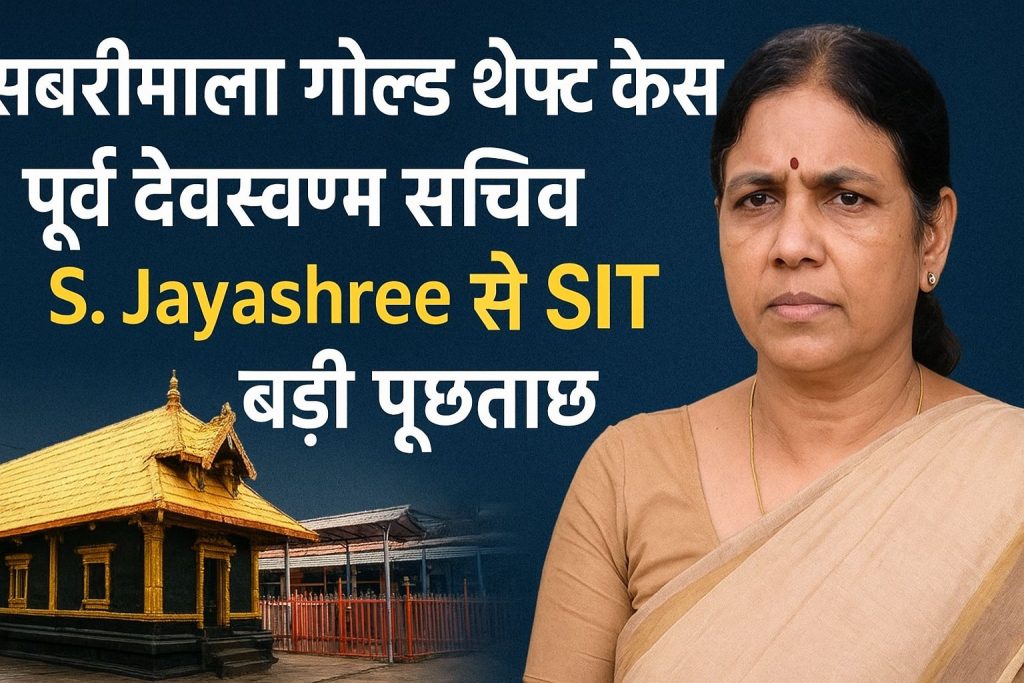
The highly controversial Sabarimala temple gold theft case is once again in the headlines. The Special Investigation Team (SIT) investigating the case is now going to question former Travancore Devaswom Board (TDB) Secretary S. Jayashree. The Kerala High Court recently rejected her anticipatory bail plea, making her statement crucial to the investigation.
What is the Sabarimala gold theft case?
In 2019, gold covering plates attached to the temple’s dvarapala idols, sanctum sanctorum doors, and other temple structures were exported under the guise of replating/repair. These plates were deliberately labeled “copper” in government records, concealing the actual amount of gold plating. According to the SIT, approximately 2 kilograms of gold was stolen during this process. This theft is not the work of a single individual, but is being considered a large-scale conspiracy in which the role of several TDB officials is under suspicion.

Main accused and direction of investigation
The main accused is Unnikrishnan Potti, who was tasked with the replating. Several former TDB officials—former president, administrative officer, executive officer, etc.—have already been arrested in the investigation. The SIT examined temple records, note sheets, and orders and found that documents were deliberately manipulated.
What is the role of S. Jayashree?
S. Jayashree, who was the Secretary of the TDB from 2017–2019, issued an order in 2019 to hand over the temple’s gold plates to Potti. The order described these gold plates as copper—the main basis of this entire scam. The court held that the allegations against her appeared prima facie to be true, and therefore, dismissed her anticipatory bail plea.
Recent major updates (December 2025)
The Kerala High Court rejected Jayashree’s anticipatory bail plea. The SIT has been given additional time to complete the investigation as large-scale collusion is emerging in the case. The ED (Enforcement Directorate) is also showing interest in investigating the financial aspects of the case. The SIT is re-examining old documents, orders, correspondence and the entire trail of the plate replating process.
DIGI MERCH STORE PRINT ON DEMAND

Why is this case important?
Serious questions have been raised regarding the security of temple properties. The theft of gold donated by devotees over the years has created distrust among the public. Investigations reveal that several processes within the temple administration have been weak or susceptible to manipulation. This case could pave the way for stricter audit and transparency rules for temple management in the future.
What next?
Awaiting the final report from the SIT—which will detail the exact amount stolen, the identification of the culprits, and information on the recovery of the gold. Action against other senior officials is also possible following questioning of Jayashree. The ED’s potential involvement in the case—for a thorough investigation into the financial irregularities.
KeralaSITprobe. visualizationsPlanners
TDBOfficialsArrest. YouTubethumbnails
SabarimalaGoldScam. PitchdecksData
SabarimalaGoldFraud. Decoration
SabarimalaGoldTheftNews. dailyprompt
Comment















